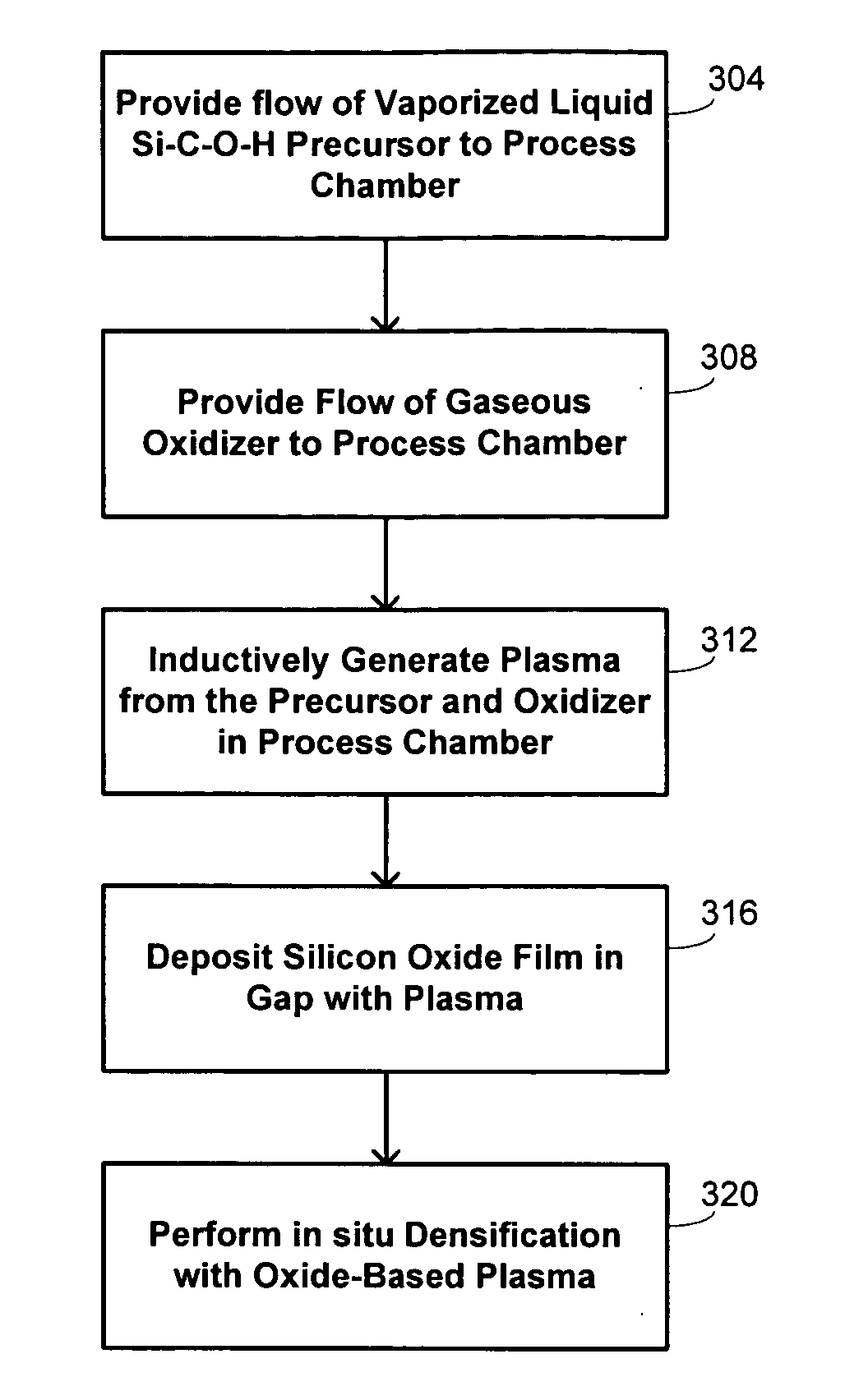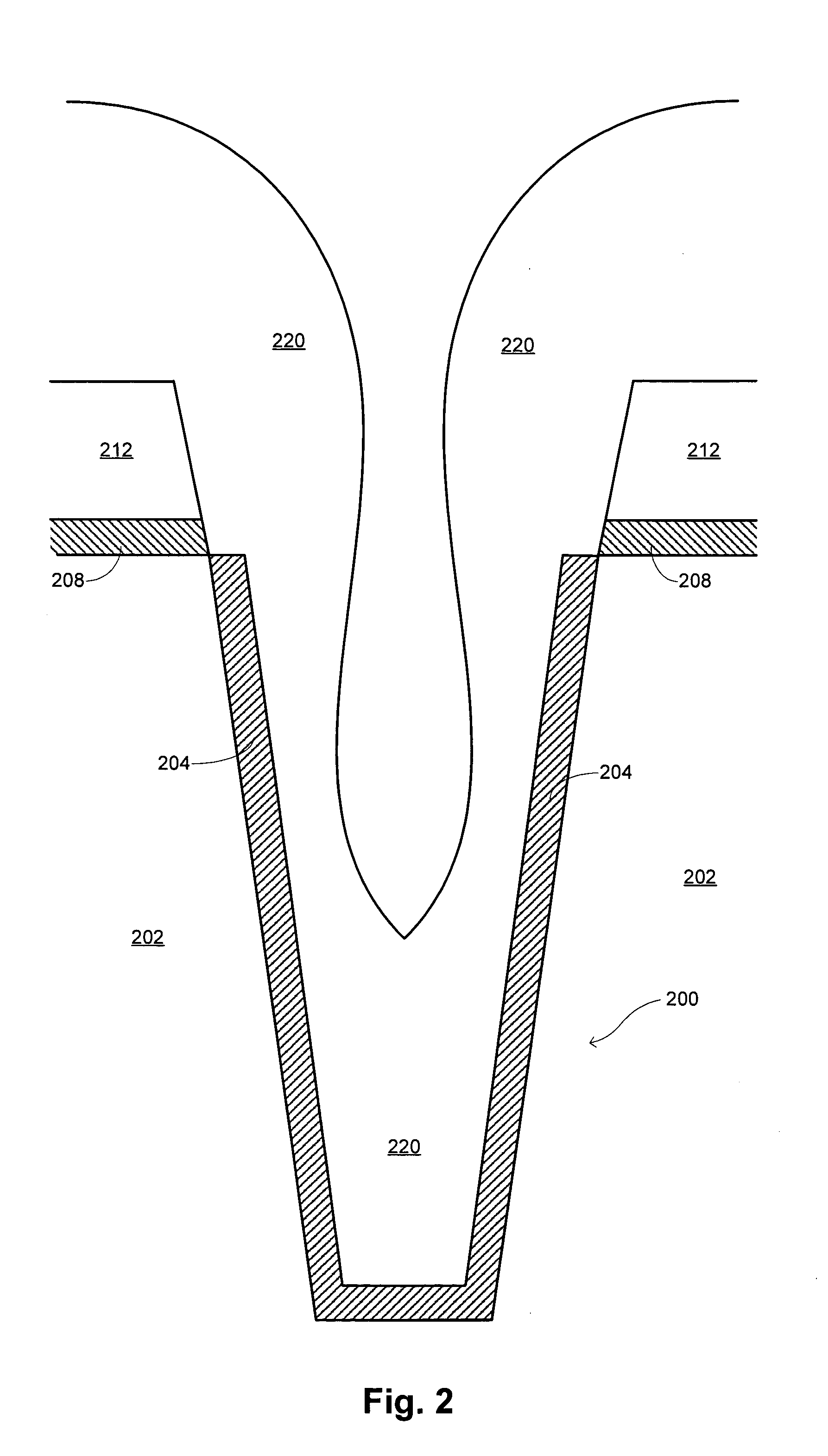Silicon oxide gapfill deposition using liquid precursors
- Summary
- Abstract
- Description
- Claims
- Application Information
AI Technical Summary
Benefits of technology
Problems solved by technology
Method used
Image
Examples
Embodiment Construction
[0019] As device geometries have continued to shrink, various techniques have been developed and used in order to improve gapfill capabilities of silicon oxide deposition processes. Such techniques have tended to focus on the basic recipe of forming a high-density plasma from gaseous silane and oxygen precursors, with variations being developed in process conditions, the presence of different fluent gases, different flow rates for gases, and the like. It appears that a practical limit to achieving void-free gapfill by implementing such changes is being reached around device geometries at the scale of 50 nm and below. Embodiments of the invention use methods that deviate from the basic recipe by vaporizing a liquid Si—C—O—H precursor and forming a deposition plasma from the vaporized liquid precursor and a gaseous oxidizer, with the deposition plasma being used to fill the gap. The liquid precursors have certain physical properties that are advantageously exploited in embodiments of ...
PUM
| Property | Measurement | Unit |
|---|---|---|
| Temperature | aaaaa | aaaaa |
| Nanoscale particle size | aaaaa | aaaaa |
| Dielectric polarization enthalpy | aaaaa | aaaaa |
Abstract
Description
Claims
Application Information
 Login to View More
Login to View More - R&D
- Intellectual Property
- Life Sciences
- Materials
- Tech Scout
- Unparalleled Data Quality
- Higher Quality Content
- 60% Fewer Hallucinations
Browse by: Latest US Patents, China's latest patents, Technical Efficacy Thesaurus, Application Domain, Technology Topic, Popular Technical Reports.
© 2025 PatSnap. All rights reserved.Legal|Privacy policy|Modern Slavery Act Transparency Statement|Sitemap|About US| Contact US: help@patsnap.com



